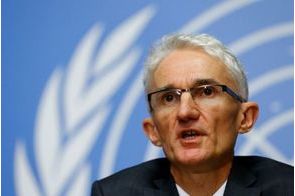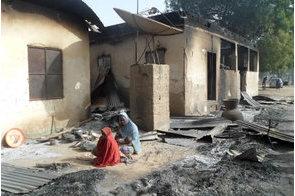Report estimates $13 billion as global economic cost of IDPs

Summary
Around 40 million people were internally displaced globally as of 2017 due to conflict, natural disasters, or both.
The Internal Displacement Monitoring Centre (IDMC) has said the annual economic cost of internal displacement globally could be nearly $13 billion per year. The Geneva-based organization said the estimate is contained in a new report published today, assessing the impact of around 40 million people who have been internally displaced globally due to conflict, natural disasters, or both.
“We have long understood the devastating impact internal displacement can have on the safety and wellbeing of people affected by conflict, violence, disasters and development projects,” Alexandra Bilak, director of IDMC, said. “But internal displacement also places a heavy burden on the economy, by limiting people’s ability to work and generating specific needs that must be paid for by those affected, their hosts, governments or aid providers.”
The researchers assessed the economic impact of internal displacement in eight countries that have recently experienced significant displacement. The countries are Central African Republic (CAR), Haiti, Libya, the Philippines, Somalia, South Sudan, Ukraine and Yemen. The eight countries assessed were also chosen for their geographic and economic diversity and availability of data.
According to the report, average annual economic impact for each internally displaced person (IDP) ranges from $174 in Somalia to $451 in CAR. Taking the average cost per IDP across all assessed countries, $310, and applying it to the total number of IDPs in the world – 40 million as of the end of 2017 – would result in $13 billion as global economic impact of internal displacement.
In all the countries assessed, the highest financial burdens came from lost income, support to housing and healthcare. The findings also indicate that impacts seem higher in low-income countries than lower-middle or upper-middle income countries.
The report used publicly available data to assess the costs and losses associated with health, shelter, education, security and income. IDMC said these estimates do not account for longer-term consequences of internal displacement, such as the future reduction in income linked to a displaced child’s inability to access school.
“This new research clearly shows the risk internal displacement represents, not only for human rights and security but also for national development,” the IDMC director added. “More data and analysis are needed to further identify where the financial losses are greatest and help governments and aid providers prevent future displacement, as well as respond more efficiently to existing crises.”
The most significant driver of internal displacement during the period studied, according to the report, was drought, which forced hundreds of thousands to flee in search of food, water and work. Apart from drought, another cause of displacement is violence. In CAR, decades of instability have led to a long-drawn displacement crisis. The economic cost of the crisis in CAR is estimated at around 11 per cent of the country’s annual GDP.
Related
-
UN officials to visit Nigeria and Chad
The joint mission provides an opportunity to assess the coordination of UN on the ground and seek further commitments from ...
-
USAID approves $92 million to support humanitarian efforts in Nigeria
USAID said it has now provided over $291 million in humanitarian assistance this fiscal year.
-
EU approves €143 million for rehabilitation of Borno State
A large proportion of the Borno population has little or no access to clean water, sanitation, shelter, education, primary ...







